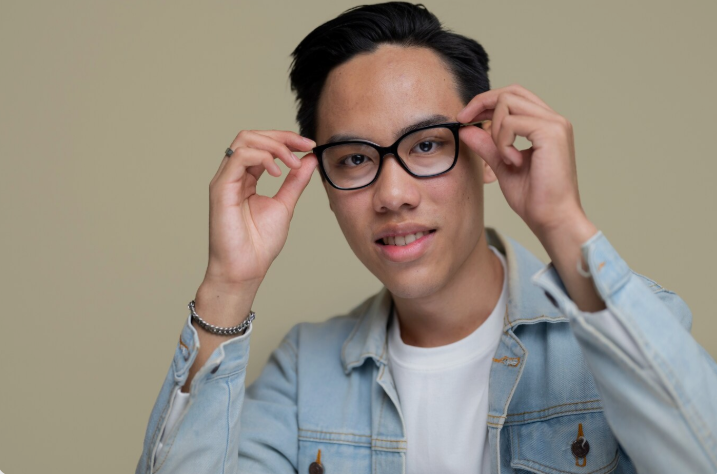Ptosis—commonly known as drooping of the upper eyelid—can affect more than just appearance. For many medical patients, it significantly impacts daily function, vision, emotional health, and overall well-being. Fortunately, ptosis correction surgery not only addresses these physical concerns but also leads to meaningful improvements in quality of life.
Whether ptosis is congenital, age-related, or caused by a medical condition (such as nerve damage, trauma, or muscular disorders), correcting it can bring a wide range of physical, psychological, and social benefits. This guide explores how ptosis surgery can help restore confidence, independence, and comfort for medical patients.
1. Restored and Expanded Visual Field
Before Surgery:
- Drooping eyelids may partially or completely cover the pupil.
- Patients may experience difficulty with peripheral or upward vision.
- Common complaints include trouble reading, driving, or navigating stairs.
After Surgery:
- Lifting the eyelid restores the natural visual field.
- Patients report being able to perform tasks more efficiently and safely.
- Many feel more alert and less dependent on others for visual tasks.
Result: Greater independence, improved safety, and increased ability to perform daily activities.
2. Reduced Eye Strain and Fatigue
The Problem:
- To compensate for a drooping lid, patients often raise their eyebrows or tilt their head back.
- This constant effort can lead to forehead strain, headaches, neck pain, and eye fatigue.
After Correction:
- Normal eyelid position reduces the need for compensatory movements.
- Patients experience less muscular tension and fatigue, especially during prolonged screen time or reading.
Result: Improved physical comfort and better focus throughout the day.
3. Enhanced Facial Appearance and Symmetry
Cosmetic Impact:
- Ptosis can make a person look tired, sad, or older than they are.
- Facial asymmetry may be noticeable and affect social confidence.
Surgical Benefit:
- Correcting the lid position improves facial harmony.
- Even subtle changes in eyelid height can refresh and rejuvenate the face.
Result: Increased self-esteem, especially in social and professional interactions.
4. Improved Mental and Emotional Well-being
Living with ptosis can impact emotional health in ways patients might not expect:
- Embarrassment in public or photos due to visible drooping.
- Frustration from struggling with basic tasks.
- Isolation from avoiding social situations or eye contact.
After surgery, patients often report:
- Feeling more confident and less self-conscious.
- Rejoining social activities they previously avoided.
- Experiencing relief from long-standing frustrations.
Result: Enhanced mood, confidence, and emotional quality of life.
5. Better Functionality in Work and Daily Routines
In professional settings, ptosis can affect productivity and performance:
- Reduced ability to focus on screens or paperwork.
- Difficulty with customer interaction or giving presentations.
- Fatigue by midday due to visual effort.
Post-surgery, many patients report:
- Improved job performance.
- Greater energy and comfort at work.
- Less visual fatigue during long work hours.
Result: Increased productivity and job satisfaction.
6. Safer Mobility and Reduced Risk of Falls
Especially in older adults, vision impairment from ptosis can increase fall risk:
- Difficulty seeing steps, curbs, or uneven ground.
- Poor upward gaze when walking or climbing stairs.
Surgical correction improves spatial awareness and visual cues, reducing these risks.
Result: Safer movement and increased confidence in navigating environments.
7. Improved Eye Health and Comfort
Severe ptosis can interfere with blinking and tear distribution, leading to:
- Dry eyes
- Irritation or redness
- Increased risk of corneal exposure or infections
Surgical lifting restores better lid function and protection of the eye surface.
Result: Healthier eyes, reduced discomfort, and decreased need for artificial tears.
8. Support for Patients With Underlying Conditions
Medical patients with conditions like myasthenia gravis, third nerve palsy, or trauma-related nerve damage often develop ptosis as a secondary issue. While treating the underlying condition is primary, correcting ptosis:
- Improves quality of life even if the root cause remains.
- Helps restore balance in patients with facial palsy.
- Can offer emotional relief to patients already dealing with chronic illness.
Result: Functional improvement without interfering with ongoing medical care.
9. Minimal Downtime and Long-Term Results
For most patients, ptosis correction is an outpatient procedure with:
- Minimal discomfort
- Low risk of complications
- Fast return to daily routines (typically within 1–2 weeks)
Results are often long-lasting, especially when performed by a skilled oculoplastic surgeon.
Result: Quick return on quality-of-life improvements without prolonged recovery.
Conclusion
Ptosis correction is far more than a cosmetic fix—it’s a transformative procedure that can dramatically enhance vision, function, emotional health, and independence. For medical patients, especially those living with chronic health conditions, the impact can be life-changing.
If you or a loved one is living with ptosis, talk to an oculoplastic specialist to explore whether ptosis correction can improve your day-to-day comfort, safety, and confidence.




